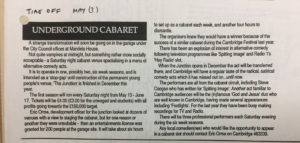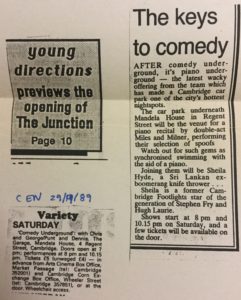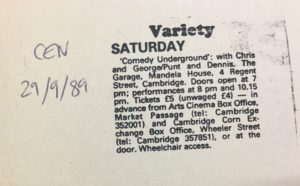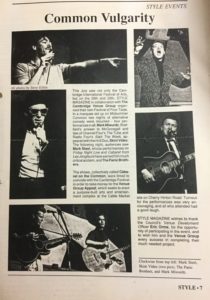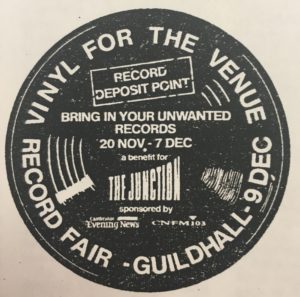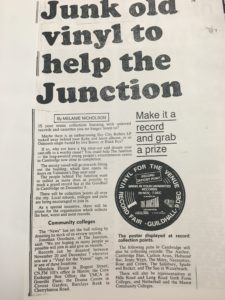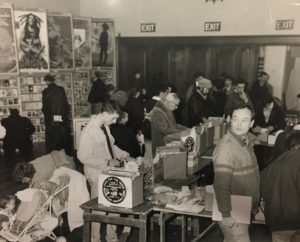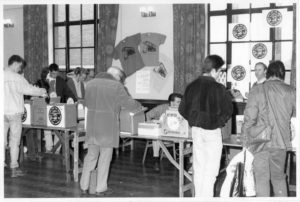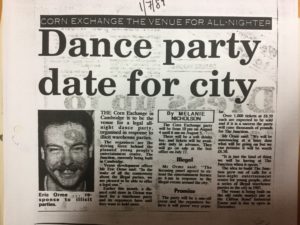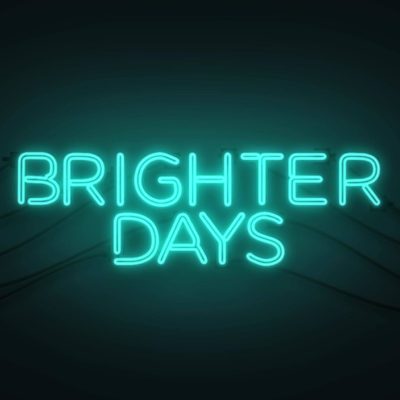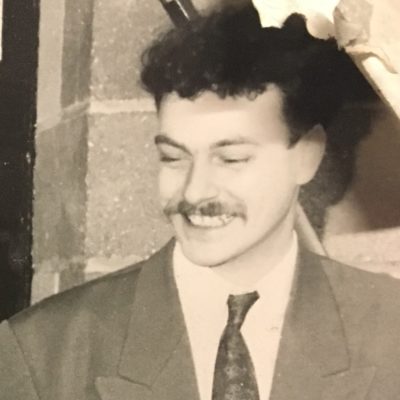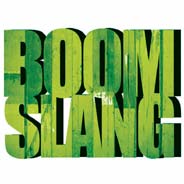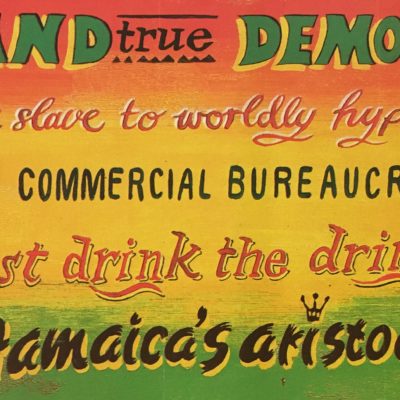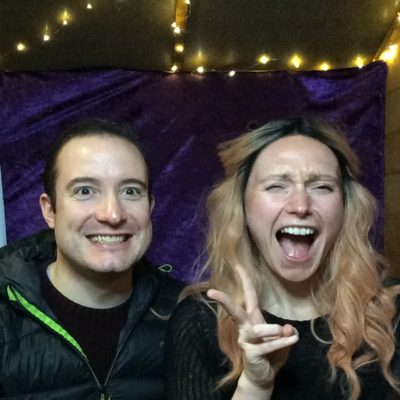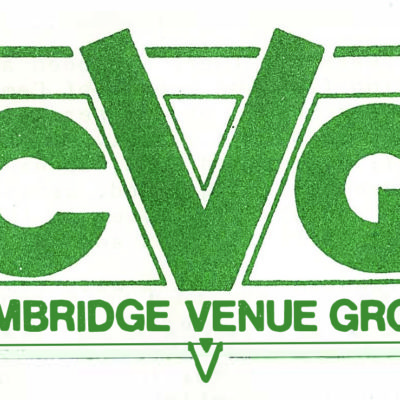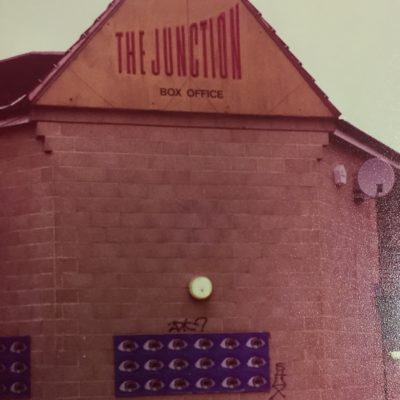Search by topic
- archaeology
- Building of Local Interest
- chapel
- charity
- church
- crime
- dressmaker
- fire
- Great Eastern Railway
- Listed building
- Mapping Relief
- medieval
- oral history
- poverty
- Public House
- Religious House
- Roman
- scholar
- school
- Then and Now
- tudor
- women
- work
- world war one
- world war two
Search by text
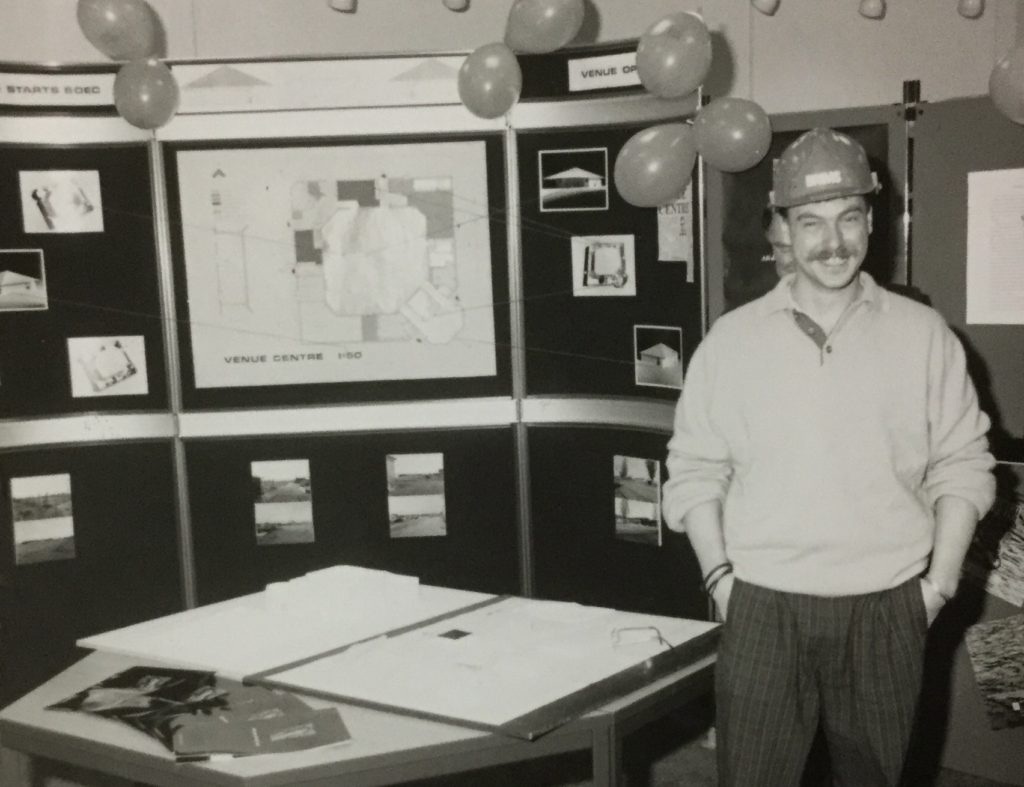
1987 – 1990: Development and Fundraising
ERIC ORME: Venue Development Officer
“My involvement was only a small fraction in the history of The Junction but it was an important one and a very important part of my life.
I was working in small-scale theatre in the West Midland when I saw the ad for ‘Venue Development Officer’ in Cambridge. I liked the look of the role and importantly, I could navigate my narrow boat, which was my home, from the canals of Birmingham to the river Cam at Cambridge. I arrived in August 1987 on a 12 month contract. I was a 24 year old with the responsibility for setting-up an £1m arts venue – the first new-build of its kind in the country.
Since the National Lottery in 1995, new arts buildings have become commonplace but in those days they were exceptionally rare. There was no longer a ‘housing the arts’ fund and few alternative sources of capital funding for arts. I was in an unusual position being responsible not to the Council, with whom my post was nested, but to the Venue Steering Committee made up of Council Members and representatives of the CVG.
It was a very tough call. Although there was political support for the project the Council officers were not that keen. It was seen more as a reluctant answer to a social problem than as a visionary and aspirational cultural project. During the period we were trying to fund-raise to fit-out the venue, inflation in the construction industry ran up to 20% per annum so the cost of the build was outstripping the budget. The extension of my contract was a good sign but the slow progress made it hard to maintain the enthusiasm of young people in the town. I often found myself sitting in Mandela House drafting press releases from the CVG critical of the Council but calculated to keep the project on track.
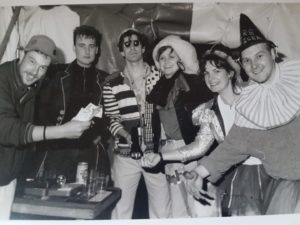
Jem Linsey remembers: This is CVG members on the door of an event, I think one of the ‘legal raves’ in the Guildhall. Eric had acquired some carnival costumes for some other event and so we made use of them for this one!
Of the six, I recognise four: Eric Orme, me, Lyn Disley and John Wroe.
Eventually we did get there. The lovely Jonathan Goodacre joined me as my Assistant in July 1989 but I felt that fresh energy was needed to take The Junction forward and argued hard for the appointment of Paul Bogan which I feel was one of the most important things I did. The Junction was actually due to open in November 1989 but the construction company got into difficulty and only by speaking to workers on site did I find that sub-contractors were refusing to work due to non-payment. The opening was postponed until 14 Feb.
This is obviously only a quick summary. We had great fun running Cabaret on the Common, Comedy Underground and Cum Cum as fundraisers and to provide an interim solution. Although I am immensely proud of it, I have returned to The Junction very little over the years. My contribution, (and it was a collective effort, it was just that I was on it full-time), was to actually keep it on track, shape it as much as we were permitted and to make it happen but it was the team we appointed that made it what it became.
Having felt rather trapped on the inland waterways and yearning for a wider horizon I sold my narrowboat, bought a seagoing sailing boat and set off across the ocean but that’s another story…”
John Wroe talking about Eric Orme and the role he played. In conversation with Hilary Cox Condron.
COMEDY UNDERGROUND
Comedy Underground. A conversation with Jem Linsey and Lyn Disley.
Cabaret on the Common
VINYL FOR THE VENUE
“Vinyl for the Venue. A fundraising event where people in the town donated their old vinyl records for sale. It made quite a bit but I bet there are plenty of people with regrets for long lost albums.”
CUM CUM CLUB AT THE GUILDHALL
Paul Darkin, Dj and club promoter: Cum Cum and acid house raves at the Guildhall.
‘Lost Nights and Love Songs’ is a Heritage Lottery funded project celebrating 30 years of The Cambridge Junction. www.junction.co.uk/lost-nights
Contribute
Do you have any information about the people or places in this article? If so, then please let us know using the Contact page or by emailing capturingcambridge@
License
This work is licensed under CC BY-NC-SA 4.0





